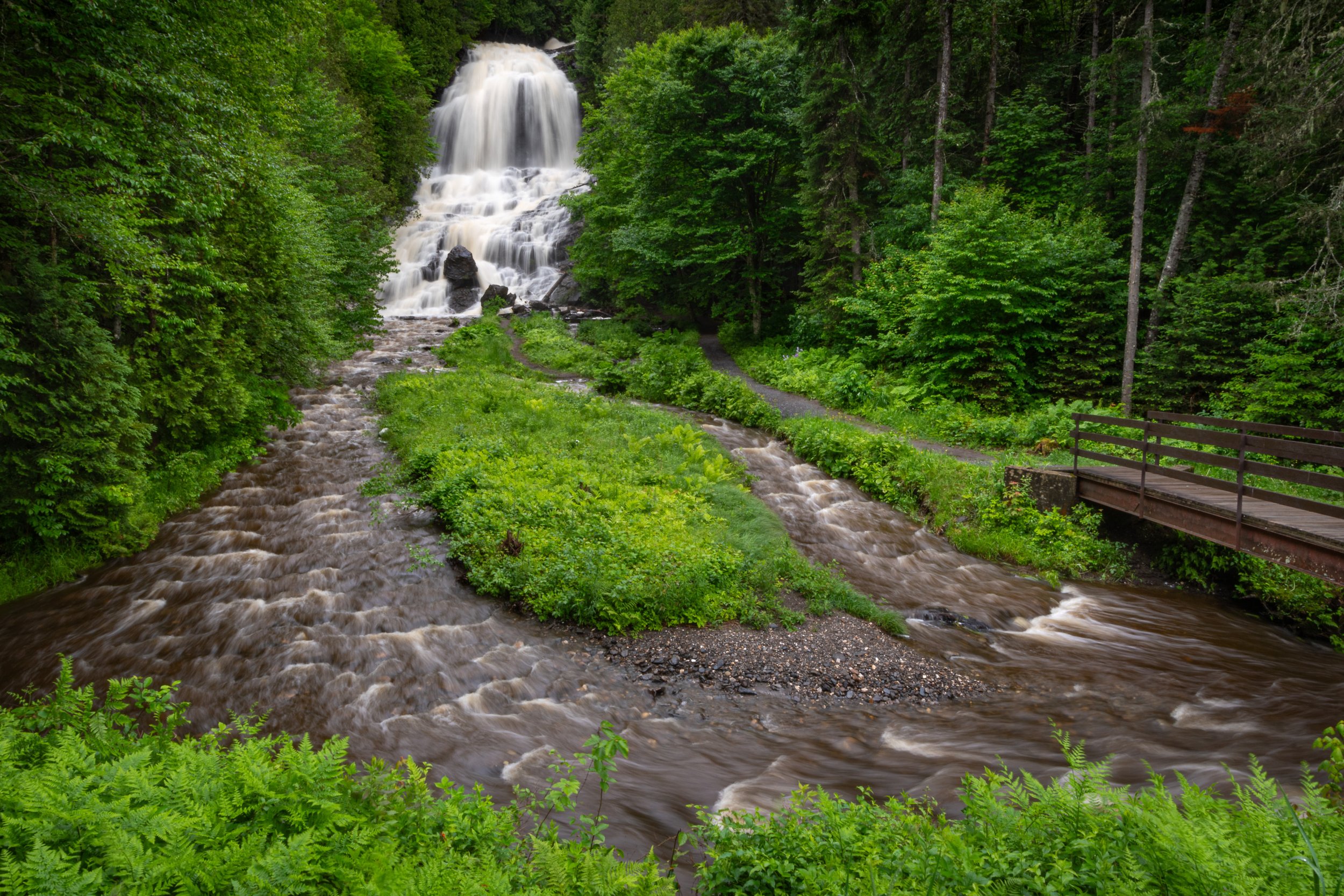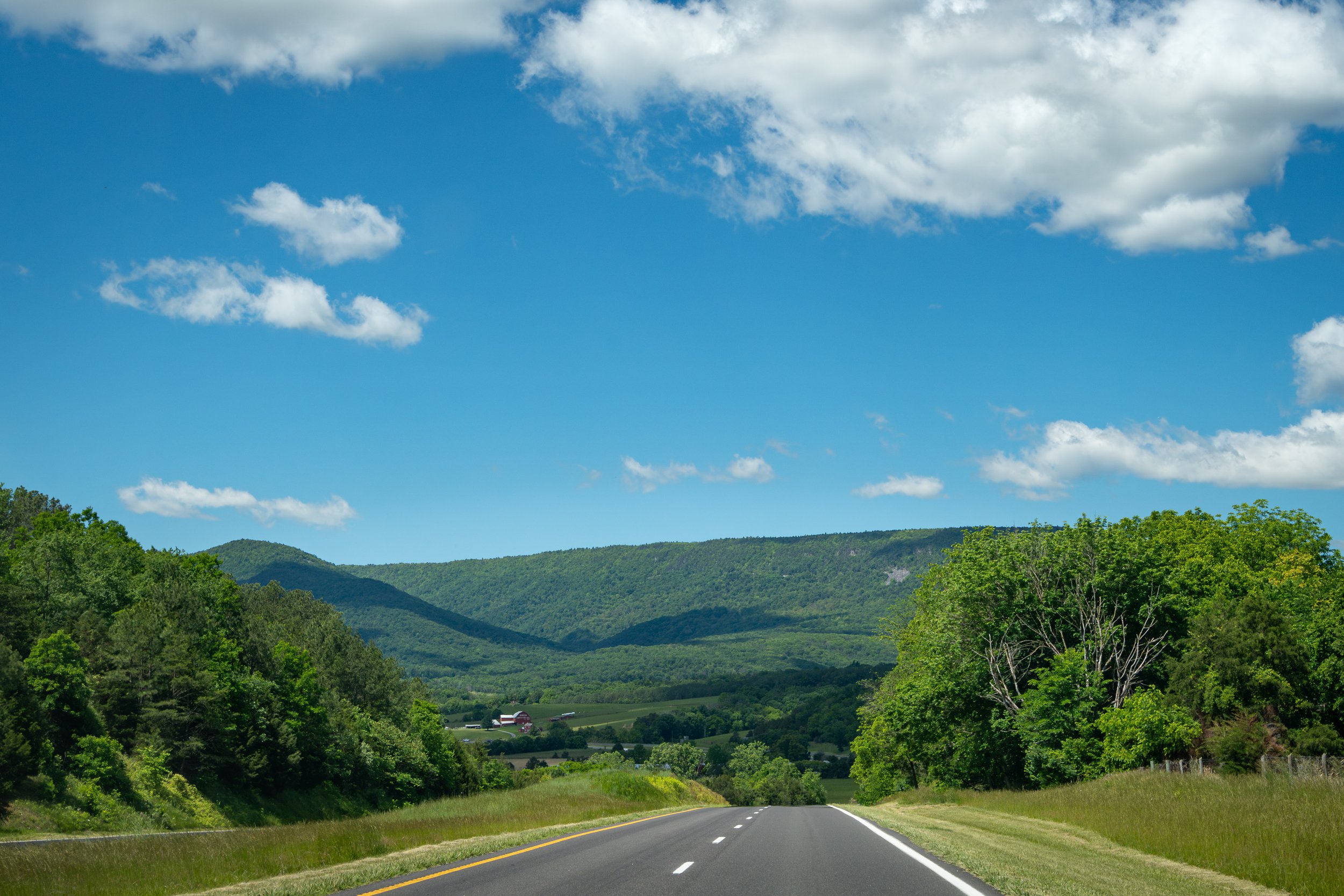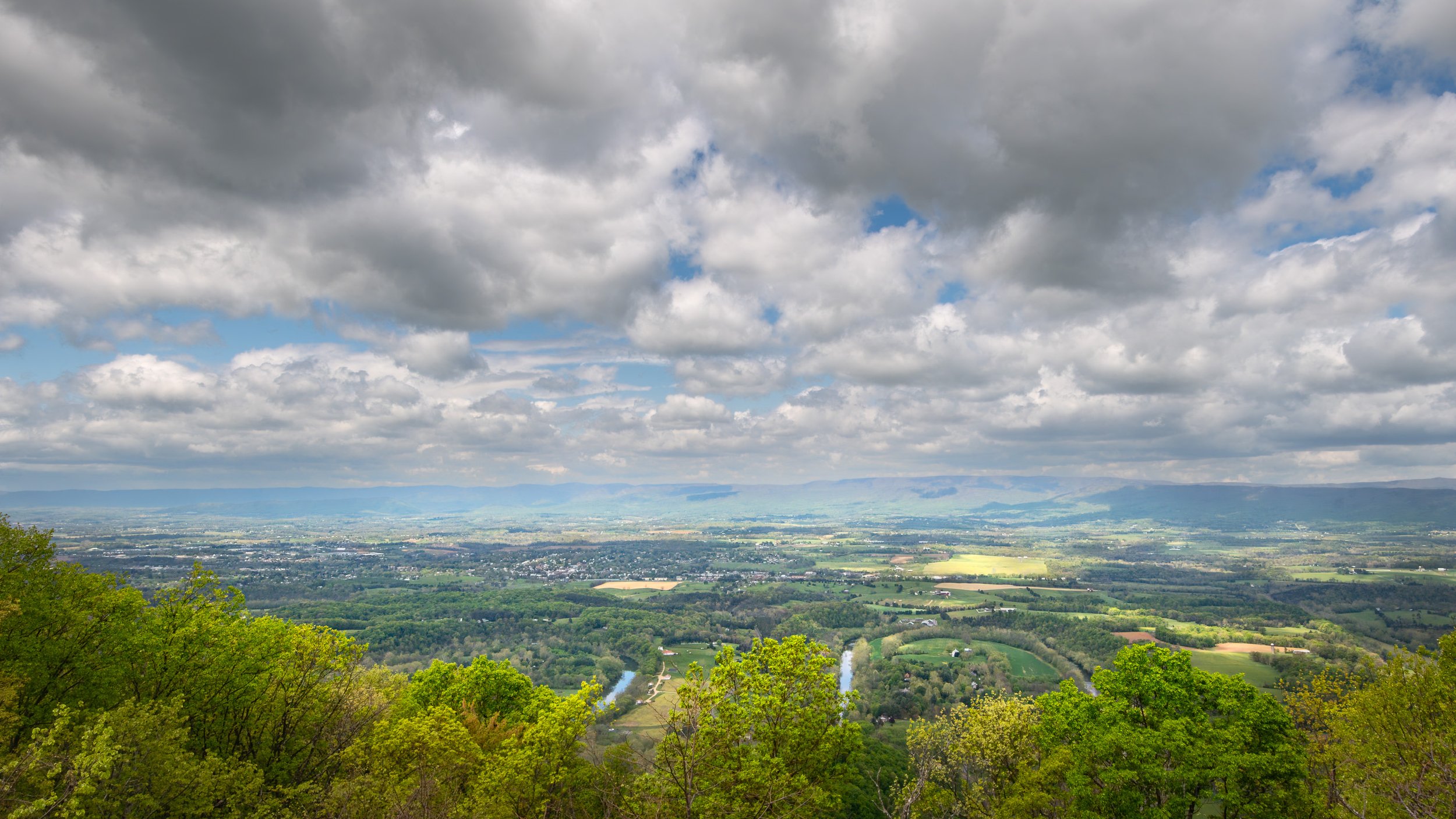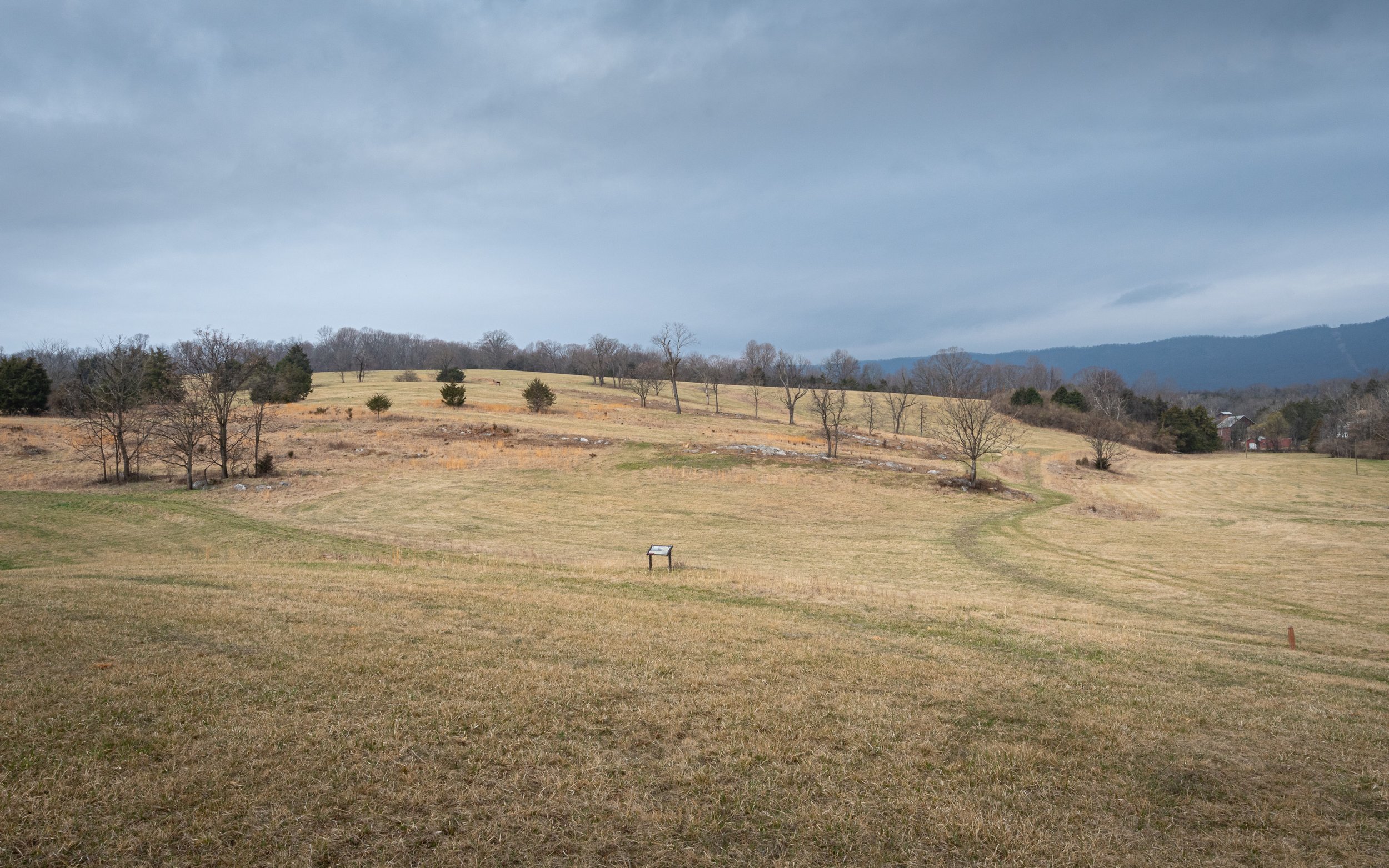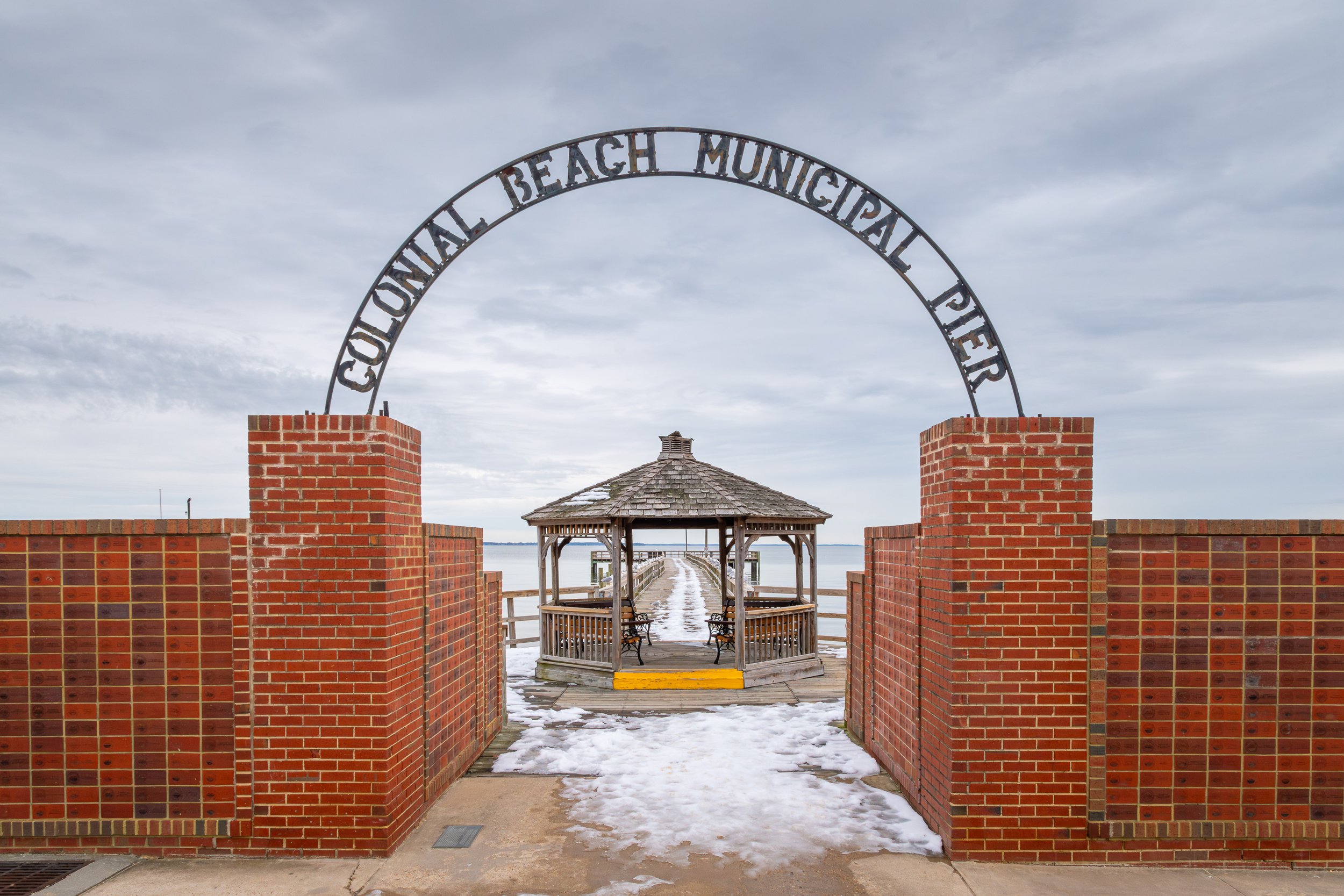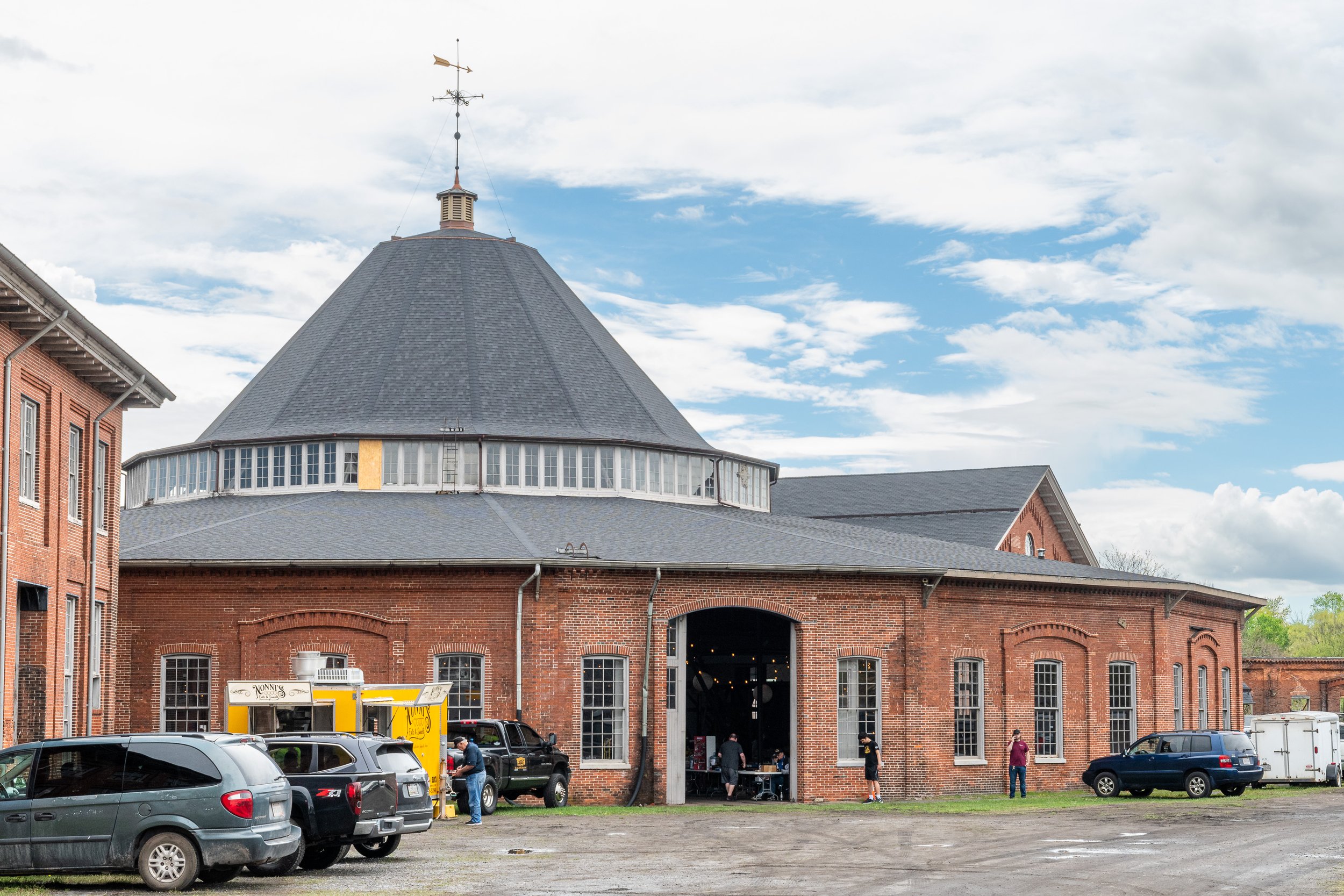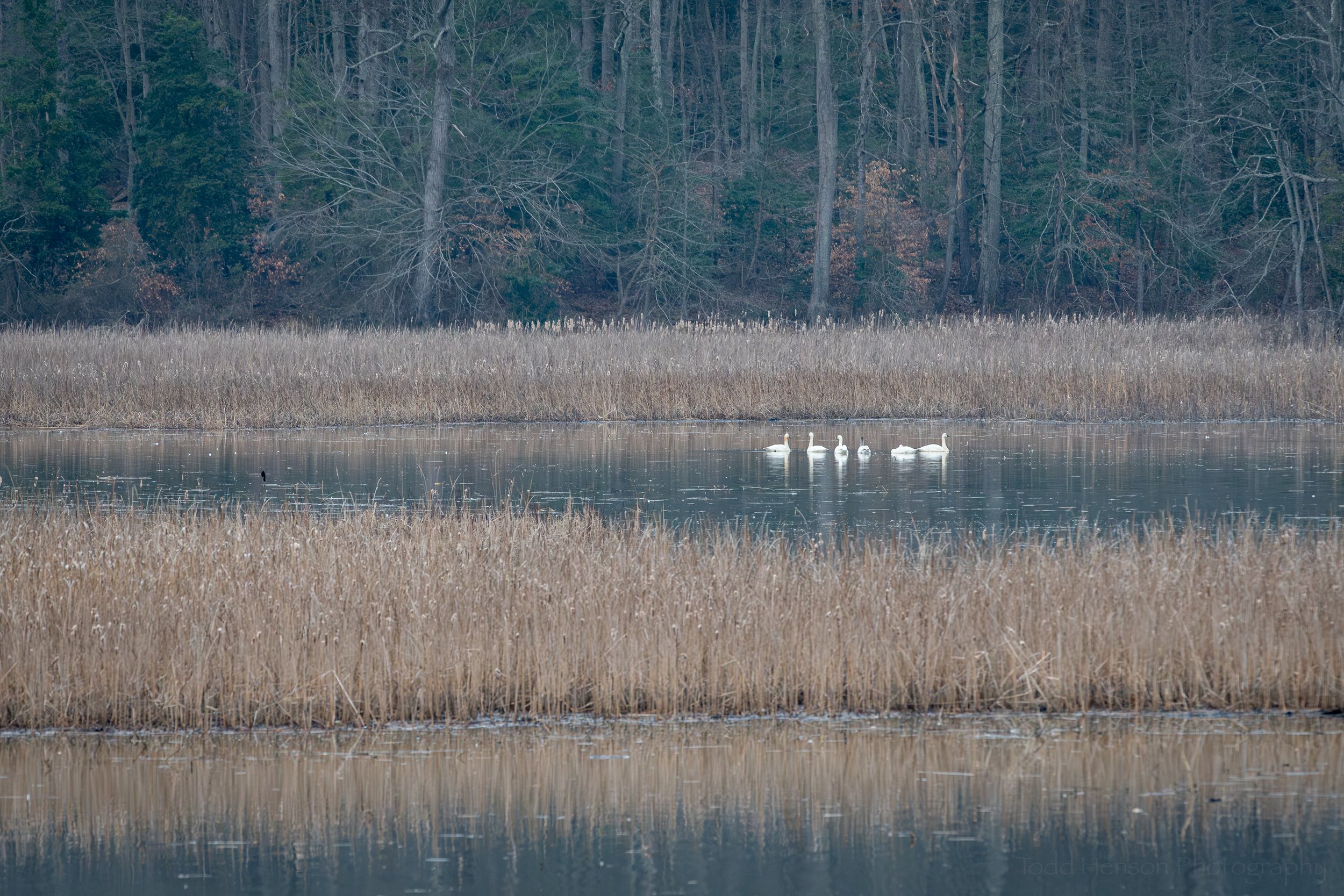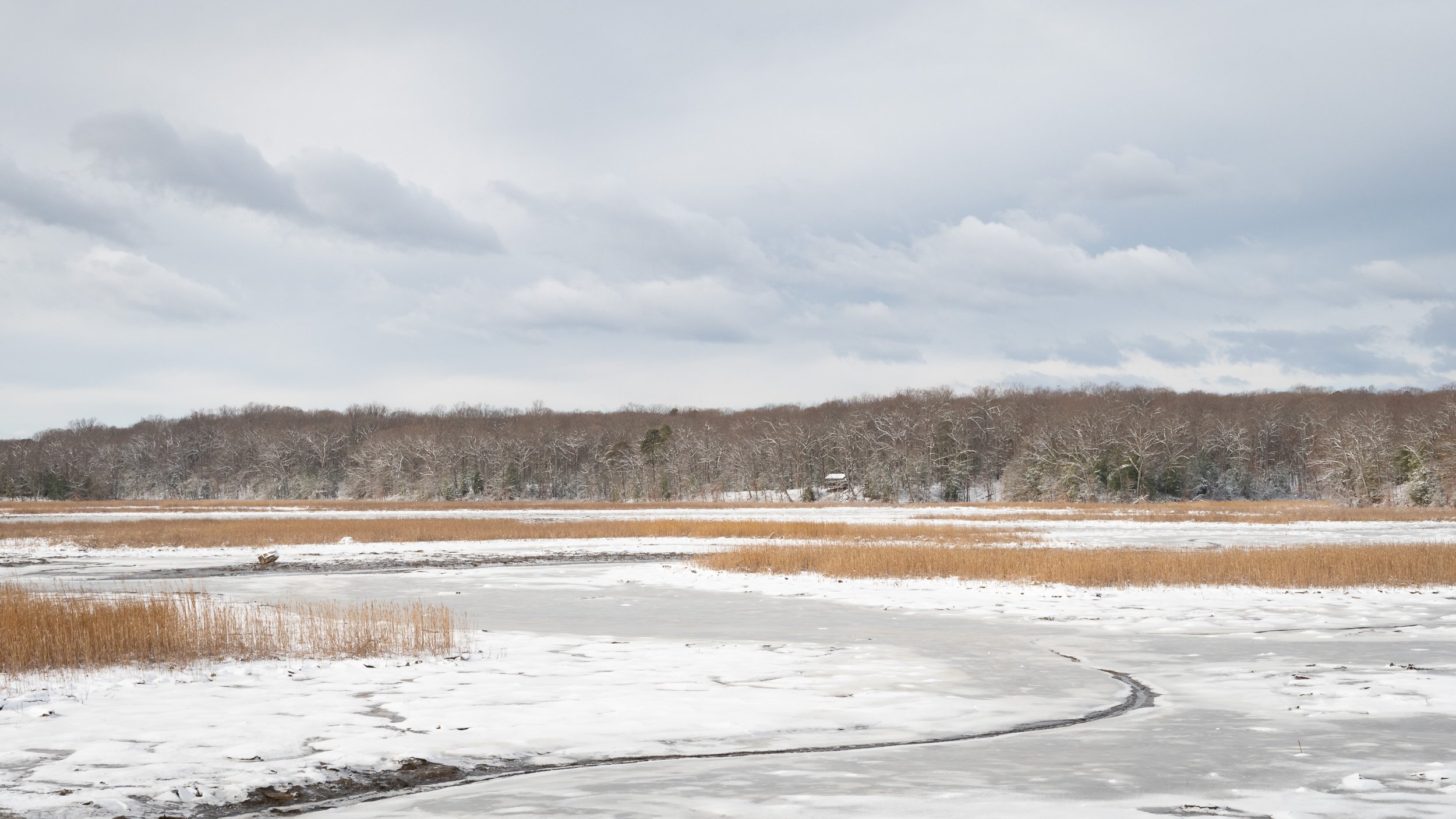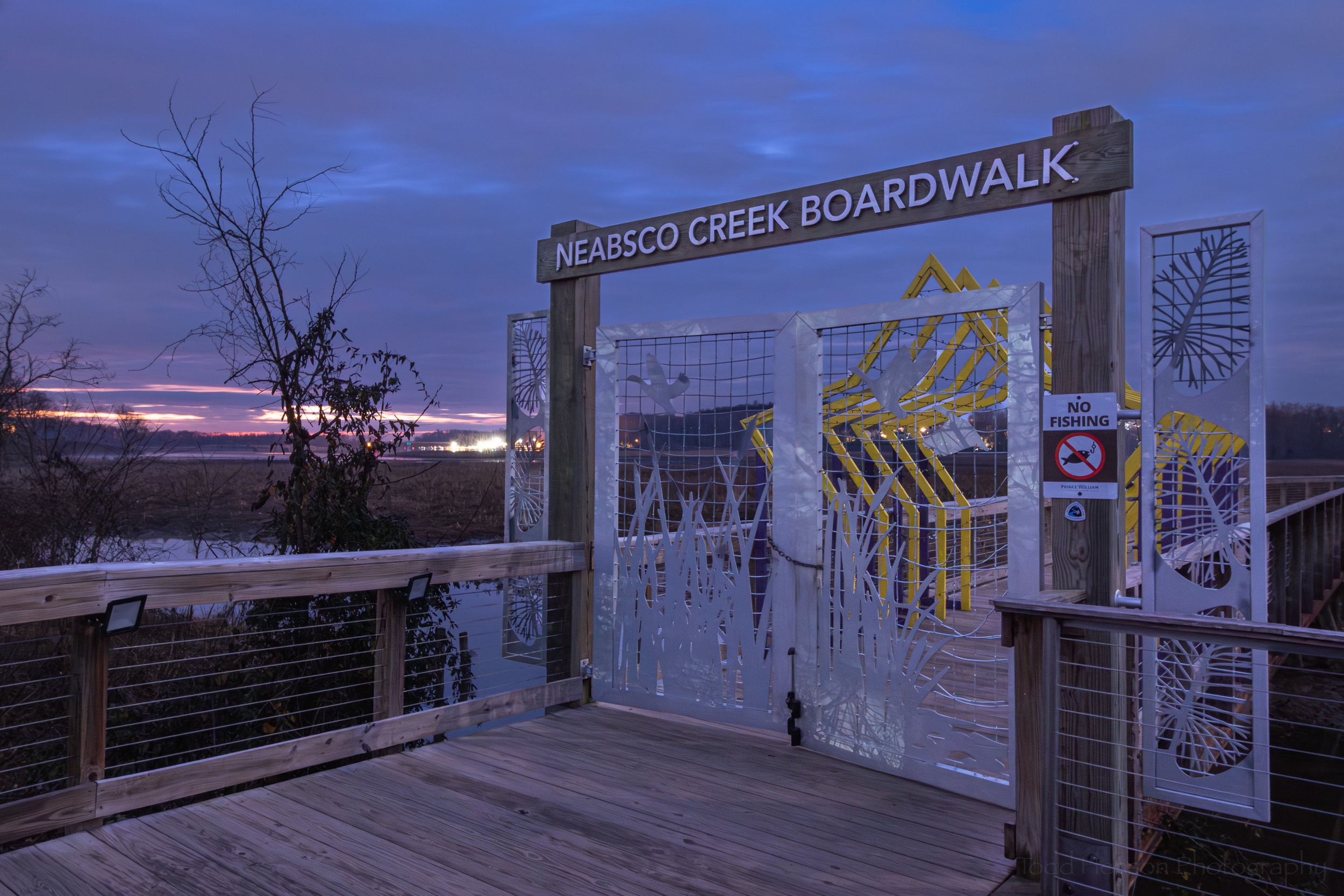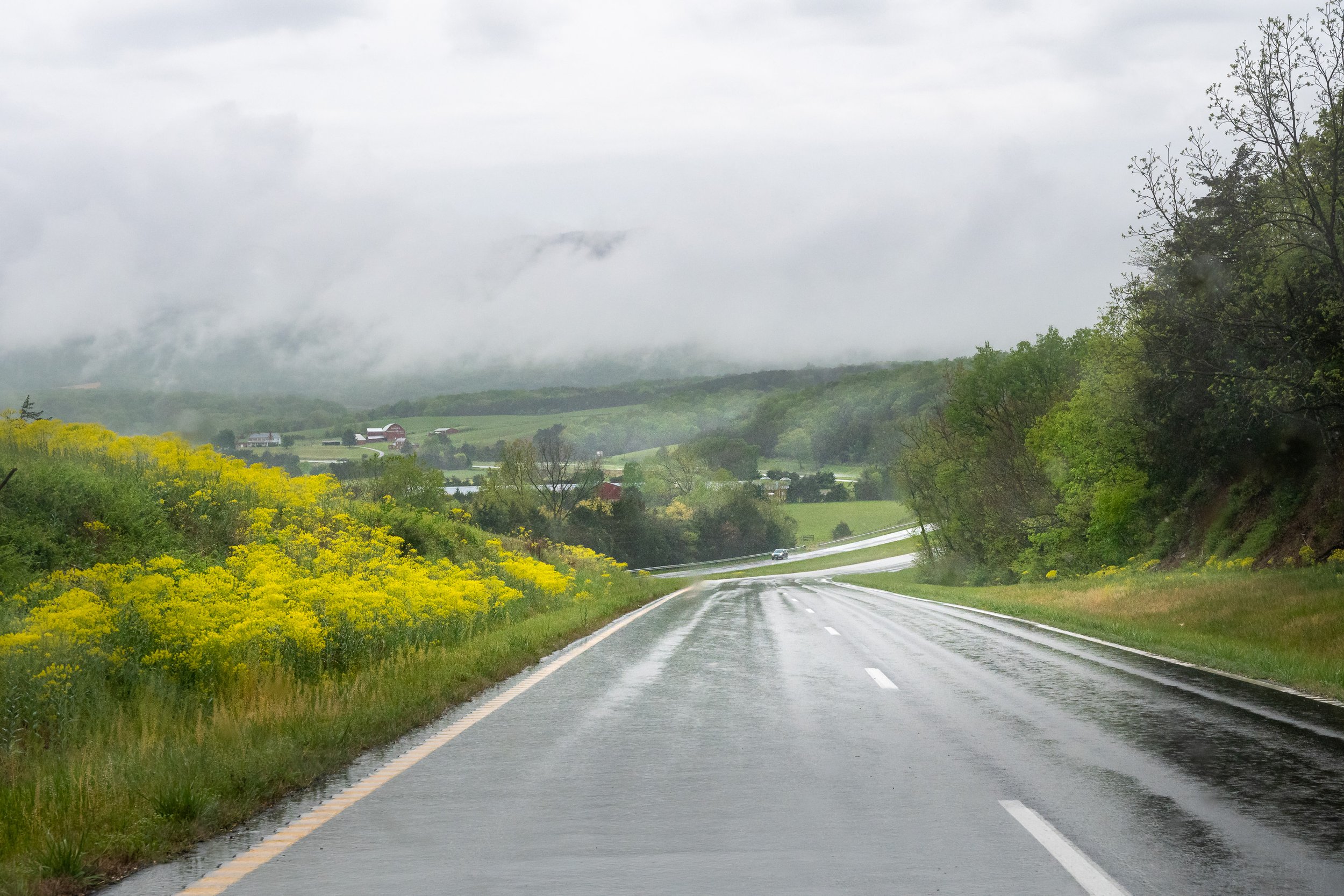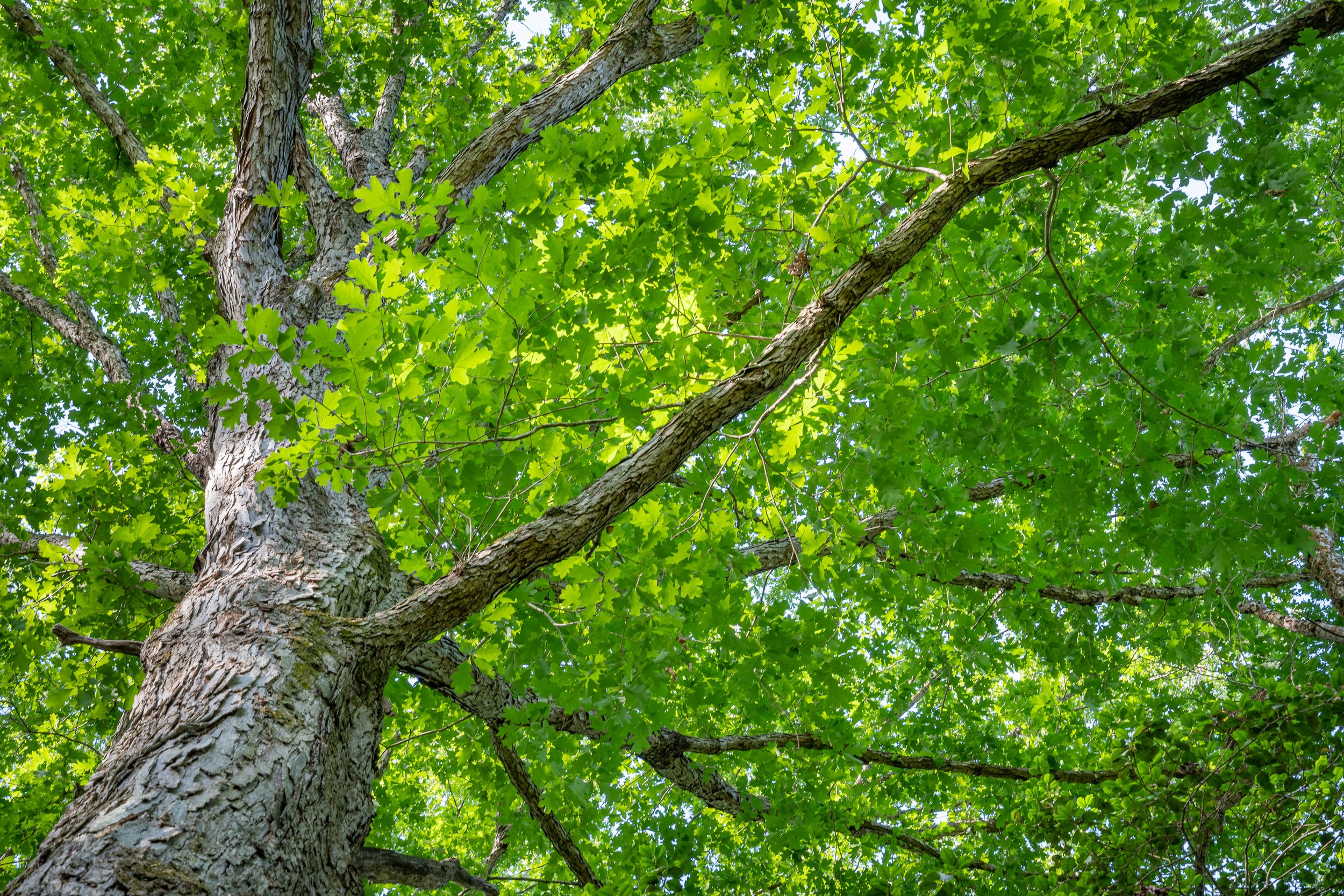Instead of a hike my father and I decided to take a short day trip down along the Northern Neck of Virginia. We’d expected to just drive around and perhaps stop and check out a few locations for future exploration, but we ended up spending more time than expected at our first stop, the Voorhees Nature Preserve, a great little location managed by The Nature Conservancy.
Intro to Voorhees
Voorhees Nature Preserve is a fairly small tract of land 729 acres in size. It’s easy enough to get to, though parking is limited, so be aware you may not find parking if you arrive at a popular time. In our case we were the only visitors, which is always nice. There is a single trail heading away from the parking area and into the woods. It’s a reasonably wide and level trail and because of this we decided to walk down it a ways and see what we could see. We’d not really planned to hike, but why not get a better feel for the location? The weather was nice and there weren’t any crowds.
The trail entering Voorhees Nature Preserve
We visited a day or two after some heavy storms had moved through the area, and not far in the trail turned into a small pond, completely submerged in water. But before turning around we noticed how there was a side trail that appeared to move around this section, which made us think this area is often muddy and water-logged. Unfortunately, as is common in these sorts of situations, there were plenty of insects flying around us, many being mosquitos. Because we’d not planned a hike we hadn’t thought to bring any bug spray.
Even before entering we found this tiny mushroom near the parking area. It’s likely some species of amanita.
We continued along a couple more short detour trails before the elevation went up enough that the trail remained dry, at which point the trail split. To the left was a trail to a pond and to the right was a trail to the Rappahannock River. For this trip we chose the trail to the pond. One day we hope to return and try the river trail.
Toads Along the Path
A young Fowler’s toad that almost appears to be attempting to hide under a small tree sprout.
The first thing we noticed after taking the left trail were the huge numbers of very small toads all along the path. We must have passed dozens and dozens of them and had to be very careful not to step on any. They were hanging out all over the leaf strewn trail and started quickly hopping away as we approached. Because we’d not expected to hike I’d only brought along my wider angle lens, a 16-35mm zoom. But here we were with some great little macro subjects. Thankfully, this lens has a reasonably close minimum focusing distance, so I bent down and did my best to capture some photos of the toads, getting within a foot of them when they’d let me (many wouldn’t). I did also see a small frog, but it hopped much faster and further so I wasn’t able to photograph it.
A small toad atop some bark and leaves.
A more colorful tiny toad, almost orange, easily blends into the leaves.
We were fascinated by the coloration of some of these toads. Some were more brown, others more orange. And yet I believe they were all of the same species, Fowler’s toads. It’s possible some may have been Eastern American toads, as it can be a little difficult (for me, at least) to tell the difference when they’re this small and haven’t yet fully developed some of the markers that differentiate them (numbers of warts on spots, size of warts on the calf, spots on their underside which I can’t typically see when they’re this small).
A tiny orange toad. I was fascinated by the color schemes of these toads.
Another tiny toad, this time perched atop a small fallen limb.
Near the pond, though, we did see what I believe to be an Eastern American toad, this one an adult. Look closely at the first photo below and see if you can locate the toad as I first saw it, hiding in one of the hollows of the tree roots. I then slowly moved up very close, hoping it wouldn’t disturb the toad. Thankfully, it patiently allowed me to get right up in its face and create the second photograph. In that one you can see some of the spots on the underside which lead me to believe it’s an Eastern American and not a Fowler’s toad.
Look closely. Can you find the toad?
Why hello, there! It’s what I believe is an adult Eastern American toad, hanging out on the tree.
Ghost Pipes Peeping Up
A small cluster of ghost pipes, a wildflower lacking chlorophyll.
I stumbled upon a single grouping of wildflowers on the trail, ones I don’t see all that often but that’re very distinct from most. In fact, they doen’t even look like flowers but more like fungi of some sort. The reason is that ghost pipes lack chlorophyll and thus are white. They don’t use photosynthesis, instead drawing nutrients from the soil and a particular fungi they have a parasitic relationship with. They may not be the most attractive wildflowers but they are fascinating. And they’re sometimes easy to overlook as they often rise right out of the leaf little, as these are.
Favorite Find: Red-spotted Newt
A first view of a red-spotted newt on the trail.
My favorite find of the hike was a small red-spotted newt resting on the leaf litter on the trail. This was beautiful timing as I’d just been telling my father the previous weekend how much I’d love to find and photograph some salamanders or newts, that I’d never found any while hiking. And here we found one right on the trail.
I moved as close as my 16-35mm lens would let me while still staying in focus, which was within a foot of the newt.
Not having run into this species before I wasn’t sure how fast they moved, and being used to lizards I was worried it would quickly disappear. So I started photographing from far away, which made the newt fairly small in the frame at only 35mm. But I slowly moved closer, lowering myself down to the ground, leaning the camera on the ground and inching closer and closer one little bit a time, hoping to get very close without disturbing the newt. Thankfully, that’s exactly what happened. And when it did begin moving it was pretty slow, so either they are slow moving creatures or this one just wasn’t very bothered by us. I have much research still to do on these beautiful little newts. I hope you enjoy these photos. I was so very excited to create them, and hope one day I’ll find another when I have a longer focal length lens with me.
The red-spotted newt turned and began very slowly moving off the trail.
A final side view of the red-spotted newt before we moved on and left it in peace.
Peering at the Pond
A view of the pond from the end of the trail.
We knew we were approaching the pond because we began to see more light through the trees up ahead and to the sides. And the trail began going down hill at a somewhat steep decline, though thankfully not too steep for us. At the end of the trail was a small wooden bench, as there had been in one other location between the fork and here. The water level appeared low but I don’t know what it typically is. There was plenty of greenery down at the surface and we watched as birds moved around down there. We saw a couple belted kingfishers chasing one another. After a short rest here we headed back to the car.
Lesson Learned: Chigger Bites ITCH!!!
When we were back in the car and driving away I mentioned to my father that one of the things I disliked about hiking trails with lots of flying and biting insects was how I always felt little small itches all over afterwards, likely a psychosomatic effect. It wasn’t until the next day that I realized this time wasn’t psychosomatic at all. I found bug bites all along my ankles and up and down both legs, around the bottom of my stomach and my lower back. I counted over 50 bites, and let me tell you each one was itching worse than most of the mosquito bites I’ve had. I did a little research and learned I’d stumbled into a batch of chiggers, little tiny mite larvae too small to see. When these bite they inject digestive enzymes into the skin and slurp up the slurry that forms, kind of like spiders do, which makes sense as both are arachnids.
Thankfully in these parts chiggers are just an annoyance. They apparently don’t carry disease the way mosquitoes or ticks do. But in return for that their bites itch more and last longer. Beautiful compromise, right? I’ve included a couple photos of one ankle where there’s a small cluster of bites. These are fairly small. Many of the bites further up the leg were about twice the width of these. The first photo shows what they looked like the day after the hike, when I first noticed them. And the second show what they looked like 4 days later. By the 4th day they looked worse but didn’t itch as much. Now, a week later, the bites are still very visible but slowly fading and no longer itch. To lessen the itching I tried medicated calamine lotion first (ingredients: calamine 8%, pramoxine hydrochloride 1%) and this seemed to help. Then my father found another itch cream that worked really well (ingredients: diphenhydramine hydrochloride 2%, zinc acetate 0.1%). I put it on in the morning and at night.
Chigger bites on my ankle the morning after the hike. They’ve begun to itch like crazy.
Chigger bites on my ankle 4 days later. They itched like crazy for 2-3 days, but by the 4th day they looked worse than they felt.
So what was the lesson I learned from this? Keep a bottle of bug spray in the car, not just in your packs that you might not bring along on “non-hiking” day trips.
Despite the run-in with chiggers I had a great time hiking the trails of Voorhees Nature Preserve and I’d very much like to return and try the other trail. I’ve no clue whether seeing toads is a common occurrence here or whether we just happened to arrive at the right time to find all these toads scattering and going their own way. But I’m glad we saw them all, and that we ran into the red-spotted newt. Even without these things it would have been an enjoyable hike, but with them it was even better.
I hope you’ve enjoyed this look at our first trip to Voorhees Nature Preserve. Do you have any small nature preserves near you? And if so have you visited them? If not get out there and check them out (but bring some bug spray! 😁).
Do you enjoy these posts?
Sign up to receive periodic emails with updates and thoughts. Don’t worry, I won’t spam you. And please consider purchasing artwork or products from my online store, and using my affiliate links in the sidebar to the right when shopping online.
I appreciate your support!


